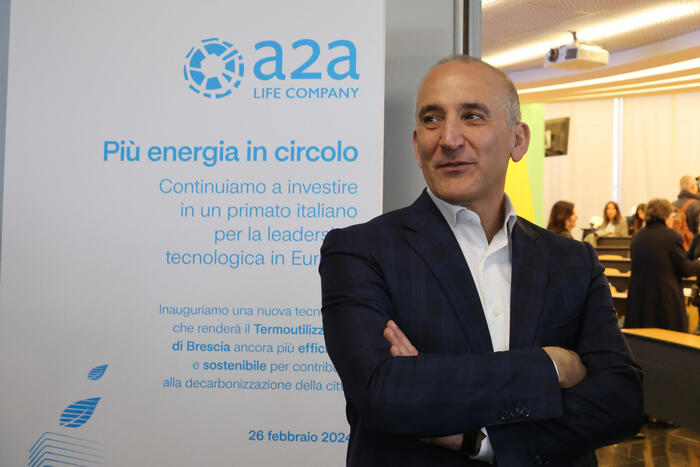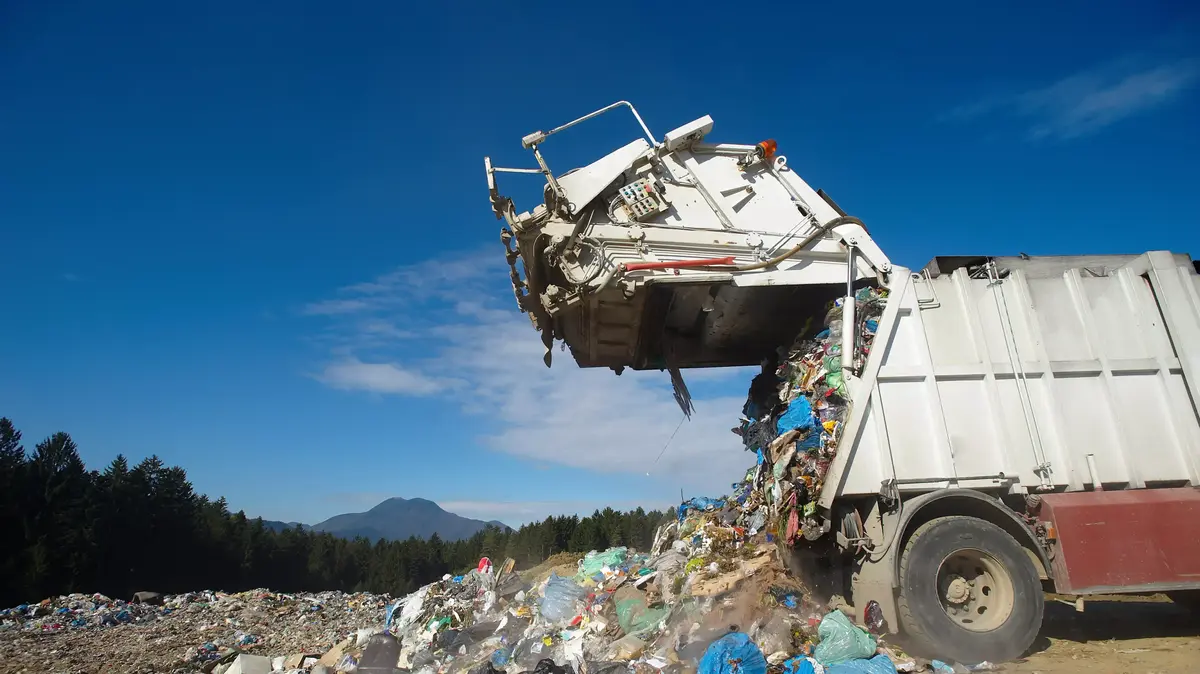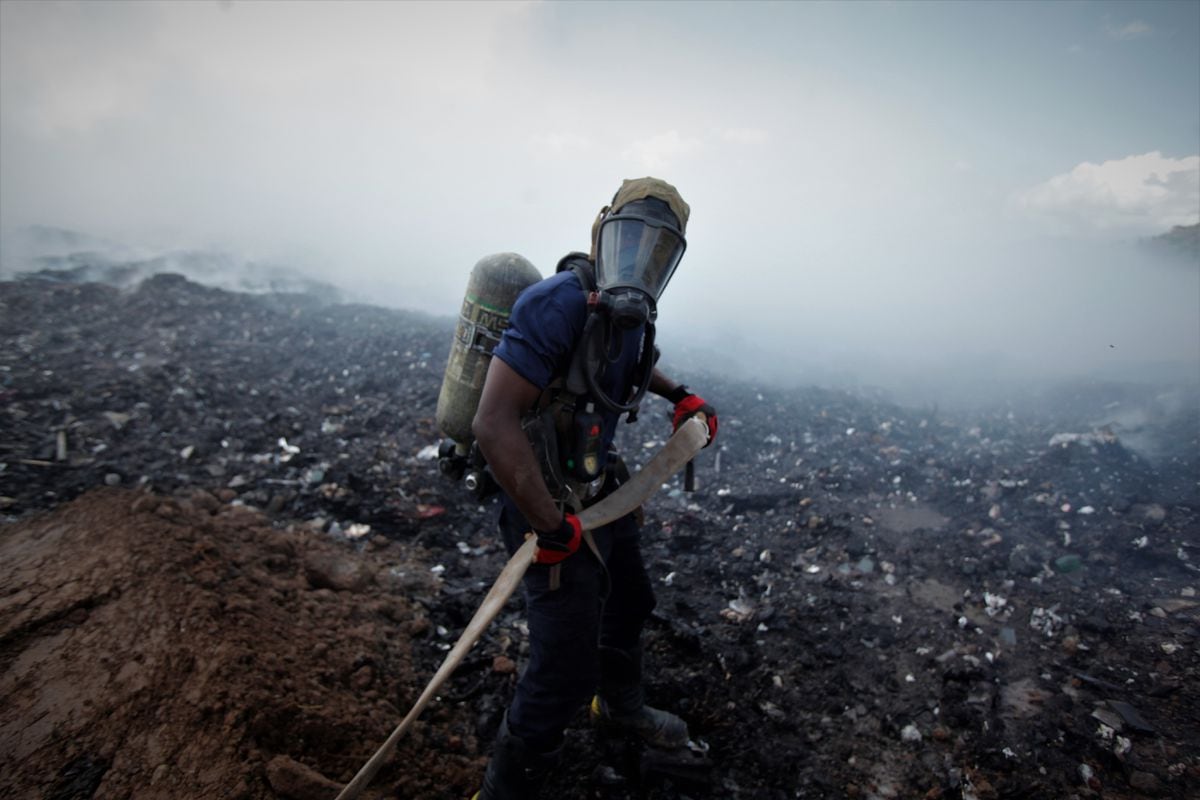Social News
Written by: Golden Chess
2021-03-09 00:00
Last update date: 2021-03-09 00:00
Food waste accounted for the largest amount of municipal solid waste disposed of at landfills every day, with a daily disposal volume of 3,353 metric tons in 2019.
In order to better handle food waste, the Environmental Protection Department opened the first phase (O. PARK1) of the Organic Resource Recycling Center in Siu Ho Wan in 2018, with the goal of recycling 200 metric tons of food waste per day.
However, it has been in operation for more than 2 years, the Environmental Protection Department said that until now O.
PARK1's daily food waste recycling volume is only 110 metric tons, which is nearly half behind the target.
The Environmental Protection Agency admits that the current food waste at the center is "not too much", but emphasizes that the recycling volume has increased significantly from 80 to 90 metric tons per day.
Affected by the new crown pneumonia epidemic, the amount of food waste collected at the center dropped briefly last year. However, after the third and fourth waves of the epidemic, the collection volume has slowly recovered.
Food Waste Recycling Plant
PARK1 series:
The food waste recycling plant "O. PARK1" is open for a guided tour and composting is sent to you to check in
+6
+6
+6
Hong Kong is a food paradise, but at the same time, it generates a lot of food waste every day, with an average of more than 3,000 metric tons of food waste. Household food waste is the first, accounting for about 70%. The second is industrial and commercial food waste, which is about 1,000 metric tons per day.
The government has started food waste recycling. Among them, the first phase of the organic resource recycling center in Siu Ho Wan, North Lantau, started operations in mid-2018.
According to a document submitted by the government to the Legislative Council in 2014, the cost of the proposed project is 1.53 billion yuan.
O.
How does PARK1 "turn waste into energy"?
Senior Environmental Protection Officer (Food Waste Recycling) Lu Jiajun of the Environmental Protection Department explained that when the food waste collection truck arrived at O.
After PARK1, it will drive into the unloading area and dump the food waste into the storage pit, and then prepare to enter the pretreatment system.
The system mainly uses a crusher to tear open the packaging materials of the kitchen waste, and crush the kitchen waste to make a kitchen waste slurry.
The food waste slurry will pass through a large drum to screen out large impurities such as plastic bags; then heavier impurities such as sand, stone, glass and metal will be removed, and the separated metal will be sent for recycling.
The separated inert materials will be sent to the landfill, including large bones, cartons and food packaging.
Lu Zhi, O.
Since PARK1 was opened in July 2018, less than 20% of the food waste recovered is inert waste.
He believes that when the center was first opened, or because food waste recycling education was not enough, he said with a smile that he had seen rubber boots and large metals, and it has improved recently.
The kitchen waste slurry after sifting away impurities will be injected into three anaerobic digestion tanks with a capacity of about 4,300 cubic meters, and stay in an anoxic environment at about 35 degrees Celsius for about 23 days, using microorganisms to convert the kitchen waste into biogas. That is biogas.
The collected biogas will be cleaned first and stored in a storage tank, ready to be used for power generation.
Finally, the residue in the anaerobic digestion tank will be dehydrated by a centrifuge, then mixed with leavening agent, and sent to the composting tunnel for composting treatment.
The entire composting and maturation process is about 20 days, and the processed compost can be used for landscaping and agricultural purposes.
Lu Jiajun pointed out that 230 kilowatt-hours of electricity can be generated per ton of food waste.
In addition to the operation of PARK1, the remaining 20% to 30% of the electricity will be exported to the grid, and the electricity exported is enough for 3,000 households a year.
He also plans to apply for certification for compost, which is expected to be available for retail in the future.
Reporter Yu O.
The outdoor location of PARK1 continued to smell rot. Lu Jiajun explained that the unloading area has been equipped with double gates. After the food waste collection truck enters the unloading area, the first gate will be closed first, and then the gate of the storage pit will be opened. The food waste collection vehicle will also be rinsed before it leaves.
O.
The main food waste treatment facilities of PARK1 are all sealed, and a central deodorizing system is also installed. The sewage will also undergo multiple treatments before being discharged to the adjacent Siu Ho Wan sewage treatment plant.
However, he pointed out that smells are inevitable, but because the nearest residential house is Discovery Bay, 1.4 kilometers away, the center has not received any complaints about smell or sewage for the time being.
O.
Since PARK1 was opened in July 2018, a total of 85,000 metric tons of food waste has been recovered. In addition to using food waste for power generation, the output of compost has reached 2,400 metric tons.
The center’s target recycling volume is 200 metric tons of food waste per day, but currently only about 110 metric tons are recovered per day. Lu Jiajun admits that “not much has been received”, but emphasized that the recycling volume has increased from 80 to 90 metric tons per day. Significantly improved.
He also pointed out that due to the impact of the new crown pneumonia epidemic, the collection volume fell briefly last year. "Airports and hotels received less during the epidemic." At that time, the Environmental Protection Agency actively contacted restaurants that did not participate in food waste recycling; to the third and fourth waves of the epidemic. At that time, the recovery volume has slowly picked up.
He expected O.
Together with the "Co-Anaerobic Digestion" project of the Tai Po Sewage Treatment Plant, PARK1's food waste recycling in Hong Kong will reach 250 metric tons by the end of 2022.
The mid-term goal of 2030 is to recover half of the food waste in Hong Kong, and plans to increase "co-anaerobic digestion" projects in Yuen Long and Shatin sewage treatment plants, and the third phase of the organic resource recovery center is still in the research stage.
Currently O.
Two-thirds of the food waste received by PARK1 comes from commercial establishments, including shopping malls, restaurants, food manufacturing plants, and bean dregs from tofu factories, and one-third comes from government properties and markets.
There are also smuggled food seized by the customs, such as smuggled frozen meat and fruit, as well as food prohibited by the Food Safety Center.
However, the unopened cans cannot be recovered at present because the facility is temporarily unable to process them.
Lu Zhi, in the next one to two years, plans to introduce facilities that can open cans, hoping to strengthen food waste recycling capabilities.
Science Park Elevator Fundraising Champions Released, Kitchen Waste Turned into T-shirt Plastic Wrap, Hope to Reduce Waste Rubber and Reduce Environmental Protection Costs
The processing volume of the South China Food Waste Factory has not reached the standard for many years, and the operation will be closed early for seven and a half years. The Environmental Protection Department is following up
A rare accident at the Siu Ho Wan Food Waste Factory, a truck falling into a 5m deep pit due to overturning of food waste, the driver was once trapped
Under the epidemic, less than 100 metric tons of food waste was recovered. The government will launch a collection plan to cover some housing estates at the end of the year
The first central rubber collection contractor in the Eastern District receives more than 10 tons of waste rubber a month, most afraid of food waste recycling bins
01News
Environmental Protection Agency Food Waste









